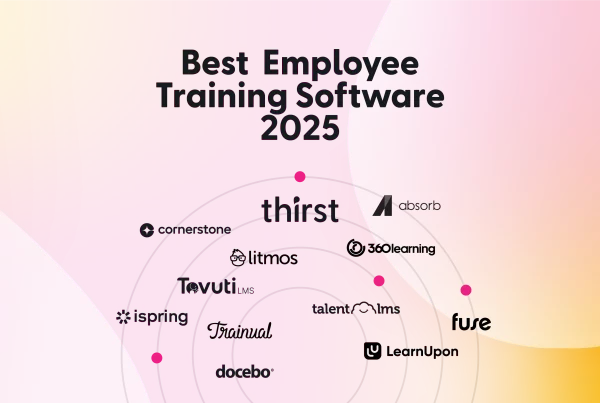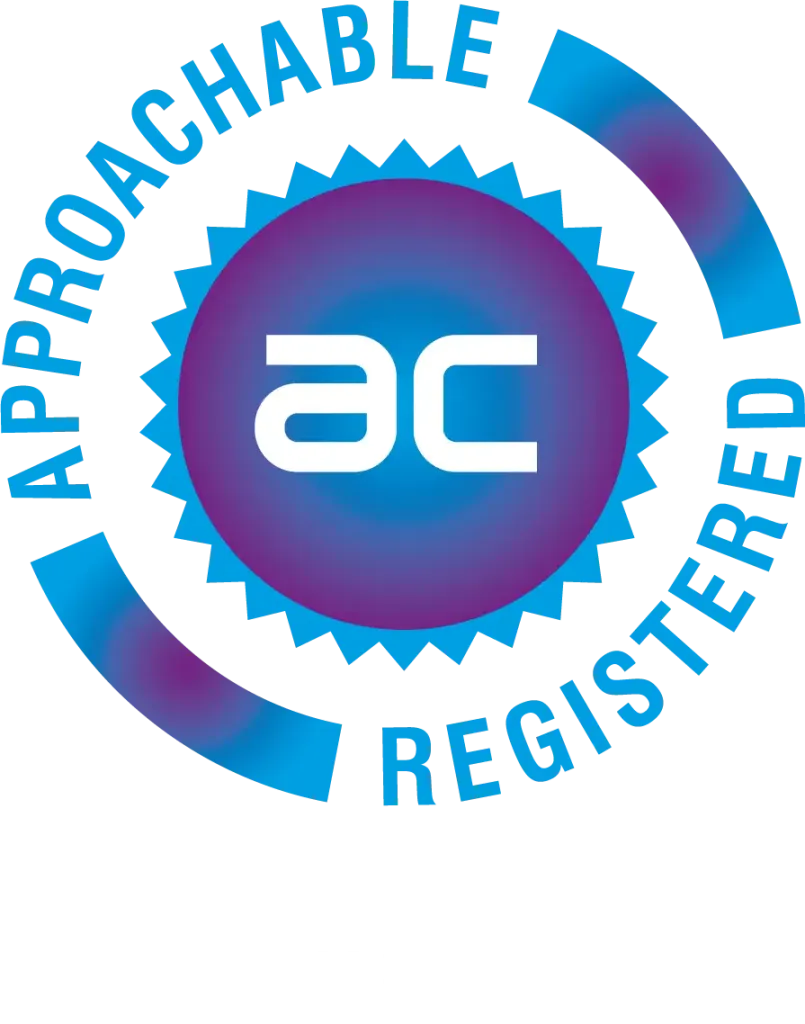Very few, if any, people want to learn new things if they’re not engaged with or interested in them, at least to some degree.
Sure, a solid learning experience can stimulate interest, even among the most cynical or dismissive of us, but a dull learning experience?
Well, let’s just say that you’re fighting a losing battle to inspire others.
Nowhere is this truer than in a school environment. Think back to your formative years in education. There were likely some kids who were engaged in art and English. But when it came to Latin and Maths, not so much. Our preferences are their preferences.
They’re ingrained in us from a young age. And if you’re not interested in translating “Caecilius est horto” or solving the algebraic equation x – 24 = 24, you’re unlikely to be engaged in the learning process.
(Incidentally, for anyone interested in seeing if they still remember their school education, when translated to English, “Caecilius est horto” means “Caecilius is in the garden” and x = 48.)
So, why are we bothering to ask you to recall your school education? 🤷♀️
Well, if you have a strong learning experience, one with stellar learner engagement, you can maximise learning effectiveness. It can turn disinterested learners into advocates. Maybe the reason why some subjects didn’t float your boat was because you never felt engaged?
Let’s look at learner engagement in a little more detail. From an exact definition and why it’s so important to its benefits and some essential tips to boost adult learner engagement.
What is learner engagement?
As we’ve already alluded to, learner engagement is the measure of how engaged, interested, and committed learners are during any L&D you organise.
It includes both cognitive and emotional elements, and learners are assessed not only on whether they understand the material but also on whether they’re curious, excited, and feel a sense of ownership over their learning.
Basically, if you want learners to engage with all continuing L&D programmes, especially those in a professional environment, be sure that the content mirrors their needs and preferences.
You maximise L&D success by designing and communicating an L&D programme that learners feel confident in and are inspired by.
It’s more than just something they feel they must do. It’s something that they want to do.☺️
The bottom line is that learner engagement is the holy grail of any successful learning initiative. There’s much research that shows engaged employees are more productive and less likely to leave your organisation.
Why is learner engagement so important?
There are several reasons why learner engagement is so important. Perhaps the most obvious is that an engaged learner is more likely to connect with and engage with the content.
This way, they retain more information and bolster the success of your L&D investment.
When learners feel actively engaged in the learning experience, they’ll be more attentive, receptive, and focused. This means that they’ll likely grasp concepts more readily and be able to get more from the whole experience. 🙌
Engaged learners become active contributors to not only their own learning journey but also the learning journey of their fellow learners.
The outome?
Everyone will be better motivated to explore more and delve deeper into the material. This leads to a deeper understanding of what you’re learning and stimulates critical thinking.
Then there’s the fact that engaged learners are more capable of applying the knowledge learned to practical situations.
Basically, theoretical concepts are transformed into real-world applications, bridging the gap between knowing and doing. The benefit of this is that it increases competencies that learners can then use in their day-to-day roles.
Yet another reason why learner engagement is so important is that it enriches the whole learning experience, increasing motivation and enthusiasm. 😀
Think back to anything that you’ve learned before. History, psychology, why WW2 started, B.F. Skinner’s theories on behaviourism, heck even how to find the best flights on the Skyscanner app.
A muted learning experience, one that’s purely theoretical and boring to boot, doesn’t exactly encourage application, let alone any continuous learning for your own personal development.
The Six Types of Learner Engagement
There are six types of learner engagement. At least according to most L&D online resources. To create a strong learning environment, one that leverages course content tailored to the needs and desires of your learners while achieving maximum success, you need to know the best way to engage them.
Some organisations may find that one specific type of learner engagement gets results.
The type of learner engagement you choose will inform your L&D material.
For instance, blended learning (in-person and online) appeals to some people, while others prefer hybrid learning. Some organisations may feel a combination of learner engagement is best to appeal to the range of L&D personalities they want to educate.
However, it’s impossible to achieve L&D success without knowing the different types of learner engagement. Below, we’ve outlined a brief description of each. 👇 👇 👇
✅ Cognitive engagement focuses on the intellectual and cognitive aspects of learning. Comprehensive understanding is emphasised, as is applying critical thinking and building connections to understand and analyse the subject.
✅ Behavioural engagement is all about the observable actions observed by learners throughout the learning process. This includes active participation, including questions and answer sessions, completing assignments, and a willingness to invest scheduled and participant’s own time and effort into the learning process.
✅ Emotional engagement places a strong emphasis on a learner’s emotional response to the learning experience. Emotionally engaged learners are likely to have a positive attitude with palpable enthusiasm and enjoyment, which can be fostered by creating a supportive and inspiring learning environment.
✅ Social engagement encourages learner interaction and collaboration. Most often, this includes peer-to-peer communication, such as group discussions and collaborative projects. Learners are encouraged to learn from one another by sharing ideas, helping everyone to develop strong communication and teamwork skills.
✅ Affective engagement isn’t too dissimilar from emotional engagement. It basically involves positive peer reinforcement to cultivate everyone’s interest, enjoyment, curiosity, camaraderie, and commitment throughout the whole learning process.
✅ Metacognitive engagement uses a person’s learned or inherent knowledge and skills to plan a task-learning strategy to, for example, solve a problem, reflect on or evaluate results, or even modify a learning approach to achieve better results in the future.
Of course, there are other types of learning engagement, such as sensory engagement, where learners experience visual and auditory cues and interactive elements to stimulate the learning experience, and physical engagement, which involves movement and kinesthetics to bolster L&D success, but, generally speaking, these are less common in a professional environment.
Ways to Engage and Motivate Learners
So far, we’ve mainly focused on theoretical learner engagement, and while it’s important to have a good academic understanding of learner engagement, successfully implementing learner engagement should really involve practical application.
This is where key strategies come into play. Below is a structured strategy that your organisation can use when implementing learner engagement. 👇 👇 👇
Set clear learning goals
Learners perform better when they know what’s required of them. The key to this is to set and communicate clear learning goals in a way that captures learners’ attention and promotes engagement.
Understanding learners’ development needs and how they relate to broader business goals is paramount. If possible, tailor strategies to unique learners to help them learn in a way they understand, focusing on professional and personal development.
When done correctly, this will improve their self-confidence and inspire them, optimising the learning process.
Focus on making learning convenient
Making learning convenient is no longer advisable. It’s necessary, essential to keeping learners engaged and motivated, and can help you optimise learning experience flexibility. Frequently engage with learners. Give them the opportunity to access learning materials anywhere.
Partner with a capable Learning Platform provider that offers online and offline capabilities across mobile and desktop devices with in-time learning principles.
Structure content in small, manageable, and easy-to-digest chunks. Leverage different types of content, including videos, infographics, guides, and more. 🔥 🔥
Provide creative course content
Bored audiences disengage. They don’t learn. Maximise interest and you’ll improve the learning experience. Making learning fun. Keep content short, sharp, and influential. Use infographics and videos to help learners digest substantial and complex information.
Create scenario-based training activities to simulate real-life situations. Combine creative learning material with microlearning principles. Put the most important information front and centre. Refer learners to quality online resources for further context.
Reward learners who are fully engaged with the material
Reward learners’ effort, and you’ll motivate them to excel. Start by understanding what motivates and inspires all types of learners. This could be personal ambition, peer acknowledgement, or course grades. Leaderboards, badges, and certificates are all simple but effective ways to reward learners.
Remember, adult learners want to build their skills. You can reward learners for each aspect of the course content they complete. Focus on social learning.
Showcase leaderboards. Distribute certifications or other markers of achievement. Ask senior decision-makers to promote acknowledgement of success. 🏆 🏆
Benefits of Learner Engagement
Engaged learners are more likely to enjoy learning. This enjoyment means that they’ll be more likely to engage with others and share newly acquired knowledge through peer-to-peer interaction.
The importance of learner engagement and its positive impact are not limited to the traditional learning experience. Engaged learners feel appreciated, positively challenged, and better equipped to follow their personal development path successfully.
What’s the result of this?
A happier, more productive, and more efficient workforce makes people less likely to want to leave the organisation and more likely to strive to achieve their potential.
So, what does this mean for commercial learning? Let’s examine below. ⬇️
Higher learning participation
Many organisations make training mandatory. This is especially true of sectors that require compliance or health and safety training, for example. The golden rule is to keep learners interested, engaged, involved, eager, and valued throughout the entire training process.
Better knowledge retention
Ever heard the quote, “Give a man a fish, and you’ll feed him for a day; teach a man to fish, and you feed him for a lifetime?” Sound L&D training allows organisations to build strong foundations to build on for future success.
Improved learner performance
Learners who are not engaged won’t retain the training information. It’s that simple. Therefore, they won’t apply what they’ve learned to their day-to-day role. So, what’s the point of having the training in the first place?
Now, we know. Much of the benefits have already been outlined throughout this blog article, and to be honest, they’re pretty self-explanatory. However, it’s worth reiterating them so you can have clear goals in mind before you begin any L&D training. 💸 💸
Tips to boost adult learner engagement
Let’s be honest: different people learn in different ways. Some favour a theoretical approach, one rich in resources; in-person training, videos, tasks, assignments, and feedback are all part of the course. Other people just want to get stuck and figure things out themselves.
However, generalisations aside, there are some ways that organisations can maximise their L&D, specifically appealing to different types of adult learners.
Keep reading below to discover different techniques to make sure adults can get the most out of their L&D training. 👇 👇 👇
Foster involvement and independence
Adult learners prefer to be involved in their education. They want to ask questions, make decisions, and cultivate ways to make the most of their L&D experience.
Offer freedom with lesson plans and activities. Promote self-directed study. Leave room for flexibility if appropriate. Don’t micromanage the process. This will encourage learners to get more from their L&D experience.
Active learning
Passive learning doesn’t tend to work for adults. Most don’t want to be sitting in a lecture hall for hours on end listening to someone speak while writing reams and reams of notes. Effective adult learning involves task completion, reasoning, and problem-solving.
Task-oriented educational tools tend to be effective. Quizzes, discussions, interactive activities, and more are all favoured by adults.
Focus on life experiences
Amplify L&D by partnering learning with life experiences. Use real-life scenarios and examples to bolster knowledge and cement ideas in learners’ minds. Asking open-ended questions and using case studies can also enrich the learning experience.
Take a diverse approach
How each adult learns is different. They’re also experienced enough to understand what type of learning works for them. In many cases, this is likely to be a combination of different learning approaches. L&D can be adapted to fit different learners.
Think about personality types, even neurodivergent needs, and adapt lesson plans according to the audience. It’s unlikely that L&D for a sales team will be the same as that for the IT department! 🤔 💡
Don’t underestimate learner engagement
Any L&D is only as effective as how engaged your learners are. No matter how scintillating the course content is, fail to nail the engagement, and your L&D will fail. The impact of disengagement has several negative implications. These include learners becoming psychologically detached, disinterested, and unwilling to expand on the L&D offered.
The result? Your organisation’s performance will suffer.
But it doesn’t have to be this way. Choose the right Learning Platform, and you’ll be well on your way to optimising learner engagement.
Interested in learning more? Book a demo today. 🔥
For more e-learning insights, resources and information, discover the Thirst blog
You may also enjoy:
What Is Learning Transfer? The Complete Guide | The Importance of Learning in the Flow of Work for L&D | A Comprehensive Guide to Learning Evaluation Models







